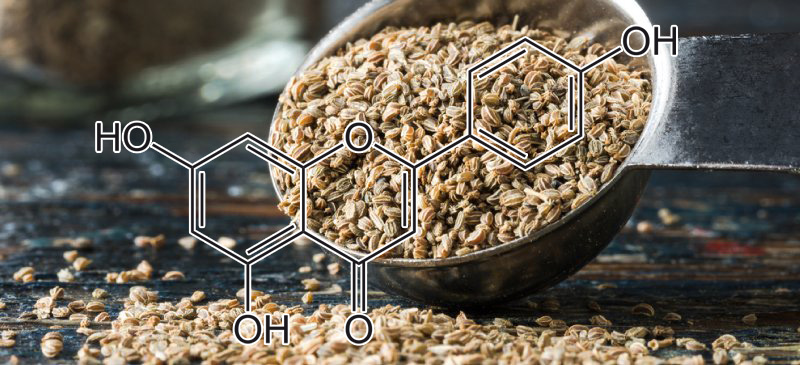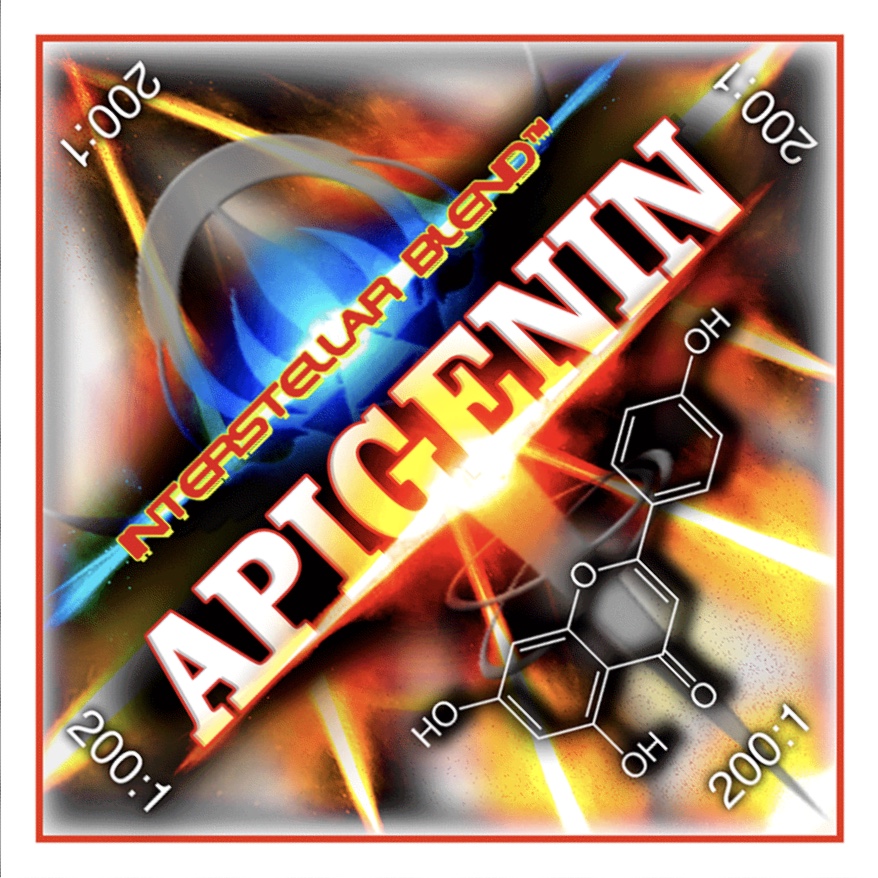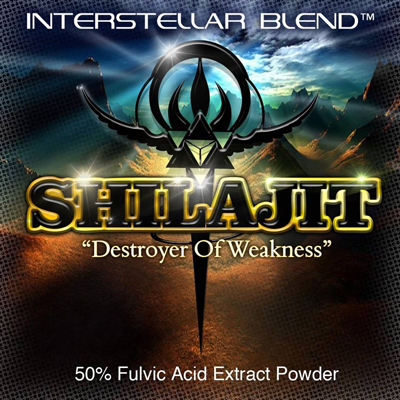
GLUCOSE BLOCKER 200:1 – New!
February 22, 2022
VICTORIOUS : Science Based Anti Viral Formula 200:1 —NEW!
February 22, 2022Apigenin 200:1
100g $250 300 1/8 tsp servings
Dosage: Start 1 tsp a day first 2 weeks then you can move down to 1/2 tsp a day for 2 weeks then 1/4 tsp a day for 2 weeks then 1/8 tsp as needed.
the strongest Apigenin on the planet
Want to grow some new brain cells?
It’s called adult neurogenesis; keep reading.
“For most of the twentieth century, there was a general consensus that brain cells could not renew themselves once the developmental period was over. Then, especially over the last two decades, overwhelming evidence gradually accumulated for the capacity of new neurons to be born in the adult brain in two clearly defined locations: the subventricular zone and the dentate gyrus (DG) of the hippocampus. The hippocampus is well known to play important roles in learning and memory, and this adult DG neurogenesis has not only been implicated in memory but has led to ideas that it could be harnessed to treat neurodegenerative and neuropsychiatric disorders.”
https://www.tandfonline.com/doi/full/10.1517/13543770902721279?scroll=top&needAccess=true
Plant compound found in spices, herbs increases brain connections
Flavonoid apigenin has potential to treat diseases like schizophrenia, depression, Alzheimer’s and Parkinson’s
- “Apigenin, a substance found in parsley, thyme, chamomile and red pepper, improves neuron formation and strengthens the connections between brain cells, new lab research demonstrates.”
New approach in treatment of brain injury: Neurotrophic effects of Apigenin
“Brain injury initiates a neuroinflammatory cascade that contributes to substantial neuronal damage. Administration of lipopolysaccharide (LPS) impaired antioxidant mechanisms, increased peroxidation and impaired mitochondrial redox activity causing brain inflammation as well as neuronal damage and impairment of brain monoamines. Apigenin gathered extensive attention in recent years because of its chemopreventive, antioxidant and antiinflammatory effects. This study aimed to evaluate the impact of apigenin in LPS induced brain injury in experimental rats and to evaluate its role in monoamines regulation as well as DNA damage reduction. Forty male albino rats were used in this study, divided into four groups (control, apigenin, LPS and treated groups). Brain malondialdehyde (MDA), brain nitric oxide (NO) and serum paraoxnase activity (PON-1) were estimated colorimeterically. DNA damage was evaluated by comet assay method, in addition to brain monoamines assessment by HPLC. Histopathological and Immunohistochemistry of cyclooxygenases (COX-1, COX-2) were also performed. The data showed that lipopolysaccharide significantly increased brain MDA, NO and monoamines concomitant with a reduction in PON-1. Contrarily, apigenin supplementation improved these values in treated group. The present study provides insights into the design of flavonoid with optimal neuroprotective activities.”
During senescence, cells express molecules called senescence-associated secretory phenotype (SASP), including growth factors, proinflammatory cytokines, chemokines, and proteases. The SASP induces a chronic low-grade inflammation adjacent to cells and tissues, leading to degenerative diseases. The anti- inflammatory activity of flavonoids was investigated on SASP expression in senescent fibroblasts. Effects of flavonoids on SASP expression such as IL-1a, IL-1b, IL-6, IL-8, GM-CSF, CXCL1, MCP-2 and MMP-3 and signaling molecules were examined in bleomycin-induced senescent BJ cells. In vivo activity of apigenin on SASP suppression was identified in the kidney of aged rats. Among the five naturally-occurring flavonoids initially tested, apigenin and kaempferol strongly inhibited the expression of SASP. These flavonoids inhibited NF-kB p65 activity via the IRAK1/IkBa signaling pathway and expression of IkBz. Blocking IkBz expression especially reduced the expression of SASP. A structure-activity relationship study using some synthetic flavones demonstrated that hydroxyl substitutions at C-20,30,40,5 and 7 were important in inhibiting SASP production. Finally, these results were verified by results showing that the oral administration of apigenin significantly reduced elevated levels of SASP and IkBz mRNA in the kidneys of aged rats. This study is the first to show that certain flavonoids are inhibitors of SASP production, partially related to NF-kB p65 and IkBz signaling pathway, and may effectively protect or alleviate chronic low-grade inflammation in degenerative diseases such as cardiovascular diseases and late-stage cancer. Inhibitory activity of apigenin on IL-6, IL-8, and IL-1b was the most potent among the five flavonoids that were tested (86.5%, 60.9%, and 94.9% at 10 mM, respectively).
Apigenin and preventing/reversing alcohol liver injury.
“In conclusion, our present results demonstrate that apigenin can exert an inhibitory effect on ethanol-induced oxidative stress and LPS-induced inflammatory response in the cultured BRL cells, and its mechanisms may be related to the reduction of CYP2E1 expression, increment of antioxidant ability, and regulation of inflammatory gene expression. These effects of apigenin may be good for the prevention and treatment of alcoholic liver injury.”
https://www.sciencedirect.com/science/article/pii/S1214021X1730162X
You want high NAD+ levels. ( CD38 is a key enzyme involved in the degradation of NAD+) Apigenin blocks CD38.
Flavonoid apigenin is an inhibitor of the NAD+ ase CD38: implications for cellular NAD+ metabolism, protein acetylation, and treatment of metabolic syndrome
“Metabolic syndrome is a growing health problem worldwide. It is therefore imperative to develop new strategies to treat this pathology. In the past years, the manipulation of NAD+ metabolism has emerged as a plausible strategy to ameliorate metabolic syndrome. In particular, an increase in cellular NAD+ levels has beneficial effects, likely because of the activation of sirtuins. Previously, we reported that CD38 is the primary NAD+ase in mammals. Moreover, CD38 knockout mice have higher NAD+ levels and are protected against obesity and metabolic syndrome. Here, we show that CD38 regulates global protein acetylation through changes in NAD+ levels and sirtuin activity. In addition, we characterize two CD38 inhibitors: quercetin and apigenin. We show that pharmacological inhibition of CD38 results in higher intracellular NAD+ levels and that treatment of cell cultures with apigenin decreases global acetylation as well as the acetylation of p53 and RelA-p65. Finally, apigenin administration to obese mice increases NAD+ levels, decreases global protein acetylation, and improves several aspects of glucose and lipid homeostasis.”
http://diabetes.diabetesjournals.org/content/early/2012/11/18/db12-1139.short
“Scientists are discovering new ways that NAD+ facilitates healthy longevity.
NAD+ levels markedly decline with age, creating an energy deficit that decreases the body’s ability to retain youthful function.
To give you an idea how impactful NAD+ can be, by age 50 a typical person may have only half the NAD+ they did in youth. By age 80, NAD+ levels drop to only 1% to 10% expressed in youth.
Deficiency of NAD+ predisposes us to accelerated aging and impedes our ability to fully benefit from resveratrol.
http://www.lifeextension.com/Magazine/2018/2/Anti-Aging-Effects-Of-NAD/Page-01
Apigenin prevents age related testosterone decline.
(APIGENIN) : Decreases COX2 while increasing StAR thus suppressing age related testosterone decline.
“During the course of male aging, circulating levels of testosterone decline [1, 2], resulting in decreases in muscle function, bone density, sex function and other physiological functions [3-5]. It was also observed that serum testosterone concentrations were significantly lower in men with Alzheimer’s disease in comparison to non-demented and age-matched men [6, 7]. Supplementation with testosterone reduced β-amyloid peptide and hyperphosphorylation of τ protein, two bio-markers of the disease [8-10]. The studies suggested that low blood testosterone is a possible risk factor for development of Alzheimer’s disease [11]. To improve the health of aging males, especially those suffering from age-associated hypogonadism, we have been attempting to determine if it is possible to delay the age-related decline in blood testosterone concentration.
Testosterone is mainly synthesized in testicular Leydig cells from substrate cholesterol and then released into the circulation [12]. It is known that the levels of blood testosterone are affected by multiple physiological and biochemical factors associated with aging [13]. It has also been shown that the primary site for the decline in blood testosterone appears to be at the level of testosterone biosynthesis in aging Leydig cells [14]. The rate-limiting step in testosterone biosynthesis is the transfer of the substrate cholesterol from the outer to the inner mitochondrial membrane to initiate the steroidogenic process [15]. Previous studies reported that a newly synthesized protein induced by trophic hormone, namely the steroidogenic acute regulatory (StAR) protein, plays a critical function at this step by facilitating the mitochondrial cholesterol transfer [16-18]. A large body of evidence demonstrated that the levels of StAR protein expression strongly affect testosterone production in Leydig cells [19]. However, StAR protein expression also decreases during the course of Leydig cell aging, and the cholesterol supply to the mitochondrial inner membrane is reduced in aged Leydig cells [20-22]. These studies implicated the involvement of an age-related decline in StAR gene expression in the decrease in testosterone production.
In addition, our studies have demonstrated that expression of cyclooxygenase-2 (COX2, an isoform of cyclooxygenase) increases during Leydig cell aging, a process that enhances the COX2-dependent inhibition of StAR gene expression. Consequently, the age-related increase in COX2 results in decreases in StAR gene expression and testosterone biosynthesis. When COX2 activity was inhibited, StAR protein expression and testosterone production were increased. Moreover, feeding aged rats with a selective COX2 inhibitor reversed the decreased StAR protein and blood testosterone concentration [23, 24].
Further studies showed that the observed COX2-dependent inhibition of StAR gene expression involves the negative signaling through an autocrine loop consisting of COX2-thromboxane A synthase (TBXAS)-thromboxane A2 (TBX A2)-receptor, in which TBX A2 generated by the co-action of COX2 and TBXAS is released from Leydig cells, and then binds to its receptors [25, 26]. These studies further indicated that the TBX A2-receptor complex regulate the expression or stability of DAX-1 (dosage sensitive sex reversal-adrenal hypoplasia congenita critical region on the X chromosome, gene-1) protein, a transcriptional repressor of StAR gene expression. Blocking the COX2-dependent signaling through this loop reduced DAX-1 protein and increased the sensitivity of Leydig cells to trophic hormone stimulation, resulting in dramatic increases in StAR gene expression and testosterone production in aged Leydig cells. These studies suggested that it is possible to delay the age-related decline in testosterone production by interrupting the signaling through this loop at any step, by either inhibiting the activity of COX2 or TBXAS, or by blocking the TBX A2 receptor.
We have continued the studies in an attempt to identify natural compounds in food or food supplements that could enhance StAR gene expression in Leydig cells by intervention in the mechanism.
After screening a group of compounds, the present study identified a natural flavonoid, apigenin that interrupted the COX2-dependent signaling by blocking the TBX A2 receptor and increased StAR gene expression and steroidogenesis in mouse Leydig cells.”
Apigenin as an Anti-Aging Skin Treatment
Skin aging is a complex biological process prematurely induced by innate and external factors. We evaluated the anti-aging effects of apigenin, a plant flavone, on human skin exposed to ultraviolet radiation. A total of 25 female subjects applied a 10% apigenin- containing regimen (eye cream, moisturizer, and serum) to the skin of their faces for eight weeks (56 days), twice daily, once in the morning and once in the evening. At day 28 (the four-week mark) and day 56 (the eight-week mark), we analyzed the treated areas for dermal density, skin elasticity; the length and area of crow’s feet; transepidermal water loss; facial and skin tone evenness; brightness; moisture retention/hydration; the size, depth, and number of wrinkles; roughness; skin hydration; and barrier function. We also evaluated the subjects’ perception and tolerance of the cream. The test regimen was well-tolerated by the study participants for various subjective parameters, including sensory attributes and improvement of overall skin conditions. The anti-aging regimen did not affect the skin barrier function and maintained baseline hydration. The test treatment provided statistically significant improvements in skin roughness and the depth of fine lines and wrinkles for fine wrinkles after 28 days of treatment. Furthermore, significant improvements were measured in skin elasticity for the firmness, maximal amplitude, and extensibility parameters after 56 days of treatment. The anti-aging regimen had a significant effect on skin elasticity. Patient perception of the apigenin containing regimen was excellent. Our findings support the evidence that apigenin can improve several markers of aging. Apigenin use in skin care products may contribute to objectively improved parameters of skin health and subjective appearance of photo-aged skin.
https://www.sciforschenonline.org/journals/clinical-cosmetic-dermatology/article-data/JCCD-2-128/JCCD-2-128.pdf
Best taken internally
Apigenin has been demonstrated to have VERY POWERFUL anti anxiety, anti depressive, anti Alzheimer’s and anti-excitotoxic neuroprotective capabilities
What is EXCITOTOXICITY?
“Excitotoxicity is the pathological process by which nerve cells are damaged or killed by excessive stimulation by neurotransmitters such as glutamate and similar substances. This occurs when receptors for the excitatory neurotransmitter glutamate (glutamate receptors) such as the NMDA receptor and AMPA receptor are overactivated by glutamatergic storm. Excitotoxins like NMDA and kainic acid which bind to these receptors, as well as pathologically high levels of glutamate, can cause excitotoxicity by allowing high levels of calcium ions (Ca2+) to enter the cell.[1][2] Ca2+ influx into cells activates a number of enzymes, including phospholipases, endonucleases, and proteases such as calpain. These enzymes go on to damage cell structures such as components of the cytoskeleton, membrane, and DNA.
Excitotoxicity may be involved in spinal cord injury, stroke, traumatic brain injury, hearing loss (through noise overexposure or ototoxicity), and in neurodegenerative diseases of the central nervous system (CNS) such as multiple sclerosis, Alzheimer’s disease, amyotrophic lateral sclerosis (ALS), Parkinson’s disease, alcoholism or alcohol withdrawal and especially over-rapid benzodiazepine withdrawal, and also Huntington’s disease.[3][4] Other common conditions that cause excessive glutamate concentrations around neurons are hypoglycemia.”
Apigenin modulates GABAergic and glutamatergic transmission in cultured cortical neurons
Antidepressant-like behavioral and neurochemical effects of the citrus-associated chemical apigenin
The Flavonoid Apigenin Protects Brain Neurovascular Coupling against Amyloid-β25-35-Induced Toxicity in Mice
In the present study, apigenin inhibited the glutamate-induced [Ca2+]i increase by inhibiting AMPA-, NMDA-, and depolarization-induced Ca2+ influx. Apigenin also inhibited the metabotropic glutamate receptor-induced [Ca2+]i increase and Ca2+-induced Ca2+ release from intracellular stores. These data suggest a possibility that apigenin inhibits synaptic transmission. Reducing [Mg2+]o bathing cultured CNS neurons elicits [Ca2+]i spikes that depends upon glutaminergic synaptic transmission (Rose et al, 1990; Shen et al, 1996; Abel et al, 2000). In this study, apigenin inhibited the synaptically mediated low [Mg2+]o-induced [Ca2+]i spikes. These data suggest that apigenin inhibits glutamatergic synaptic transmission in cultured rat hippocampal neurons by inhibiting AMPA-, NMDA-, and depolarization-induced Ca2+ influx as well as metabotropic glutamate receptor-induced release of Ca2+ from IP3-sensitive intracellular stores and Ca2+-induced Ca2+ release from ryanodine-sensitive stores. However, it has not been studied in the present study whether apigenin affects the release of glutamate in the presynaptic sites, although apigenin inhibited the high K+-induced [Ca2+]i increase in the soma.
Apigenin has neuroprotective effects against oxidative stress-induced cell death in SH-SY5Y cells (Wang et al, 2001), or glutamate-induced neurotoxicity in cultured cortical neurons (Losi et al, 2004). Our results showed that apigenin inhibits glutamate-induced calcium signaling. These results suggest a possibility that inhibitory effects of apigenin on glutamate-induced calcium signaling can partly be due to the neuroprotection against neuronal cell death, demonstrating a possibility that apigenin might be used as a neuroprotective agent against glutamate-induced neurotoxicity, partly through inhibition of calcium signaling.
Protection of apigenin against excitotoxicity by anti-oxidative effects.
Apigenin (5,7,4′-trihydroxyflavone) is a principal ingredient of Cirsium japonicum. These experiments were performed to determine whether apigenin has neuroprotective effects against kainic acid (KA)-induced excitotoxicity in vitro and in vivo. Intraperitoneal (i.p.) administration of apigenin (25, 50 mg/kg) decreased the seizure scores induced by KA injection (40 mg/kg, i.p.) in mice. In addition, the convulsion onset time was significantly delayed by apigenin administration. Moreover, we found that apigenin blocked KA-induced seizure-form electroencephalogram (EEG) discharge activity in the brain cortex. In hippocampal cells, apigenin inhibited KA-induced excitotoxicity in a dose-dependent manner as measured by the 3-(4,5-dimethylthiazol-2-yl)-2,5-diphenyltetrazolium bromide (MTT) assay. To study the possible mechanisms underlying the in vitro neuroprotective effects of apigenin against KA-induced cytotoxicity, we also examined the effect of apigenin on intracellular reactive oxygen species (ROS) elevations in cultured hippocampal neurons and found that apigenin treatment dose-dependently inhibited intracellular ROS elevation. The remarkable reduction of glutathione (GSH) levels induced by KA in hippocampal tissues was reversed by apigenin in a dose-dependent manner. In addition, similar results were obtained after pretreatment with free radical scavengers such as trolox and dimethylthiourea (DMTU). Finally, after confirming the protective effect of apigenin in hippocampal CA3 region, we found apigenin is an active compound in KA-induced neuroprotection. These results collectively indicate that apigenin alleviates KA-induced excitotoxicity by quenching ROS as well as inhibiting GSH depletion in hippocampal neurons.
Apigenin: A Promising Molecule for Cancer Prevention
“Androgen-inducible transforming growth factor β (TGF-β1) derived from dermal papilla cells (DPCs) is a catagen inducer that mediates hair growth suppression in androgenetic alopecia (AGA). In this study, a cell-based assay system was developed to monitor TGF-β1 promoter activity and then used to evaluate the effects of activated TGF-β1 promoter in human epidermal keratinocytes (HaCaT). To accomplish this, a pMetLuc-TGF-β1 promoter plasmid that expresses the luciferase reporter gene in response to TGF-β1 promoter activity was constructed. Treatment of HaCaT with dihydrotestosterone, which is known to be a primary factor of AGA, resulted in a concentration-dependent increase in TGF-β1 promoter activity. However, treatment of HaCaT with the TGF-β1 inhibitor, curcumin, resulted in a concentration-dependant decrease in TGF-β1 expression. Subsequent use of this assay system to screen TGF-β1 revealed that HaCaT that were treated with apigenin showed decreased levels of TGF-β1 expression. In addition, treatment with apigenin also significantly increased the proliferation of both SV40T-DPCs (human DPCs) and HaCaT cells. Furthermore, apigenin stimulated the elongation of hair follicles in a rat vibrissa hair follicle organ culture. Taken together, these findings suggest that apigenin, which is known to have antioxidant, anti-inflammatory, and anti-tumor properties, stimulates hair growth through downregulation of the TGF-β1 gene.”
* LONG HALF LIFE; builds up over time. “Blood kinetics showed a high elimination half-time (91.8 hr), a distribution volume of 259 mL, and a plasmatic clearance of 1.95 mL/hr. All of the parameters calculated from these experiments suggested a slow metabolism of apigenin, with a slow absorption and a slow elimination phase. Thus, a possible accumulation of this flavonoid in the body can be hypothesized.”https://www.sciencedirect.com/science/article/pii/S0955286310000379

200 MORE SCIENTIFIC STUDIES ON APIGENIN
- Effect of apigenin, kaempferol and resveratrol on the expression of interleukin-1beta and tumor necrosis factor-alpha genes in J774. 2 macrophages.
- Topical apigenin improves epidermal permeability barrier homoeostasis in normal murine skin by divergent mechanisms
- Apigenin and cancer chemoprevention: progress, potential and promise
- An increase in the luteolin: apigenin ratio in Marchantia polymorpha on UV-B enhancement
- Anti-inflammatory effects of apigenin on nicotine-and lipopolysaccharide-stimulated human periodontal ligament cells via heme oxygenase-1
- Metabolism of apigenin by rat liver phase I and phase II enzymes and by isolated perfused rat liver
- Apigenin: a promising molecule for cancer prevention
- Dietary apigenin reduces LPS‐induced expression of miR‐155 restoring immune balance during inflammation
- The Immune-modulatory and Anti-carcinogenic Mechanisms of the Flavonoid Apigenin
- Molecular basis for the action of a dietary flavonoid revealed by the comprehensive identification of apigenin human targets
- Inhibition of proteasome activity by the dietary flavonoid apigenin is associated with growth inhibition in cultured breast cancer cells and xenografts
- Apigenin inhibits VEGF and HIF-1 expression via PI3K/AKT/p70S6K1 and HDM2/p53 pathways
- Apigenin inhibits TGF-β1 induced fibroblast-to-myofibroblast transition in human lung fibroblast populations
- Metabolism of flavonoids via enteric recycling: mechanistic studies of disposition of apigenin in the Caco-2 cell culture model
- Apigenin inhibits the self-renewal capacity of human ovarian cancer SKOV3‑derived sphere-forming cells
- Potential synergy of phytochemicals in cancer prevention: mechanism of action
- Enhanced anti-tumor effect of combination therapy with gemcitabine and apigenin in pancreatic cancer
- Apigenin and its impact on gastrointestinal cancers
- Targeting the PI3K/Akt/mTOR axis by apigenin for cancer prevention
- Apigenin inhibits antiestrogen-resistant breast cancer cell growth through estrogen receptor-α-dependent and estrogen receptor-α-independent mechanisms
- Apigenin suppresses cancer cell growth through ERβ
- Apigenin induces apoptosis via extrinsic pathway, inducing p53 and inhibiting STAT3 and NFκB signaling in HER2-overexpressing breast cancer cells
- Protoapigenone, a natural derivative of apigenin, induces mitogen-activated protein kinase-dependent apoptosis in human breast cancer cells
- Autophagy inhibition enhances apigenin-induced apoptosis in human breast cancer cells
- Apigenin, a dietary flavonoid, inhibits proliferation of human bladder cancer T-24 cells via blocking cell cycle progression and inducing apoptosis
- Phytoestrogens: potential benefits and implications for breast cancer survivors
- Plant-derived flavone Apigenin: the small-molecule with promising activity against therapeutically resistant prostate cancer
- Apigenin and breast cancers: from chemistry to medicine
- Flavonoid apigenin modified gene expression associated with inflammation and cancer and induced apoptosis in human pancreatic cancer cells
- Role of apigenin in cancer prevention via the induction of apoptosis and autophagy
- Combined with Apigenin Synergistically Induced Apoptosis and Inhibited Migration in Human Breast and Liver Cancer
- Apigenin and cancer chemoprevention
- Protective effect of apigenin on radiation-induced chromosomal damage in human lymphocytes
- Suppression of rat and human androgen biosynthetic enzymes by apigenin: possible use for the treatment of prostate cancer
- Resveratrol, piperine and apigenin differ in their NADPH-oxidase inhibitory and reactive oxygen species-scavenging properties
- Apigenin augments the growth inhibitory effects of doxorubicin in breast cancer cells derived from African American patients
- Additive and synergistic effect of phytochemicals in prevention of oral cancer
- Oxidative stress triggered by Apigenin induces apoptosis in a comprehensive panel of human cervical cancer-derived cell lines
- Modulation of thyroidal radioiodide uptake by oncological pipeline inhibitors and Apigenin
- Effect of dietary apigenin on colonic ornithine decarboxylase activity, aberrant crypt foci formation, and tumorigenesis in different experimental models
- Dietary apigenin potentiates the inhibitory effect of interferon-α on cancer cell viability through inhibition of 26S proteasome-mediated interferon receptor
- Anti-mutagenic and pro-apoptotic effects of apigenin on human chronic lymphocytic leukemia cells
- Apigenin inhibits pancreatic cancer cell proliferation through G2/M cell cycle arrest
- Bioinformatics and in vitro experimental analyses identify the selective therapeutic potential of interferon gamma and apigenin against cervical squamous cell
- Inhibition of mTOR by apigenin in UVB-irradiated keratinocytes: A new implication of skin cancer prevention
- Apigenin for chemoprevention, and chemotherapy combined with therapeutic reagents
- Apigenin and naringenin suppress colon carcinogenesis through the aberrant crypt stage in azoxymethane-treated rats
- Chlorpromazine and apigenin reduce adenovirus replication and decrease replication associated toxicity
- Apigenin inhibits HeLa sphere‑forming cells through inactivation of casein kinase 2α
- Synthesis, characterization and free radical scavenging activity of apigenin with or without magnesium (II)
- Actions of the Dietary Flavone Apigenin in the Context of Human Colorectal Cancer
- INHIBITORY EFFECTS OF APIGENIN ON MAMMALIAN DNAPOLYMERASE AND PROLIFERATION OF HUMAN CANCER CELLS
- Apigenin stabilized gold nanoparticles increased radiation therapy efficiency in lung cancer cells
- ROLE OF APIGENIN IN CANCER PREVENTION
- The Flavonoid Apigenin Inhibits Inducible Programmed Death Ligand 1 Expression by Breast Cancer Cells
- Apigenin-ask a busy flavone!
- The flavonoids apigenin and luteolin suppress ultraviolet A-induced matrix metalloproteinase-1 expression via MAPKs and AP-1-dependent signaling in HaCaT cells
- Citrus flavonoids luteolin, apigenin, and quercetin inhibit glycogen synthase kinase-3β enzymatic activity by lowering the interaction energy within the binding cavity
- Apigenin: chemopreventive and chemotherapeutic potential for progestin-dependent breast cancer
- Degradable poly (apigenin) polymer inhibits tumor cell adhesion to vascular endothelial cells
- Apigenin in combination with Akt inhibition significantly enhances thyrotropin-stimulated radioiodide accumulation in thyroid cells
- Effects of apigenin, lycopene and astaxanthin on 7β-hydroxycholesterol-induced apoptosis and Akt phosphorylation in U937 cells
- Apigenin inhibition of involucrin gene expression is associated with a specific reduction in phosphorylation of PKCδ-Y311
- Apigenin prevents development of medroxyprogesterone acetate-accelerated 7, 12-dimethylbenz (a) anthracene-induced mammary tumors in Sprague-Dawley rats
- The dietary flavones apigenin and luteolin impair smooth muscle cell migration and VEGF expression through inhibition of PDGFR-β phosphorylation
- The natural flavonoid apigenin suppresses Th1-and Th2-related chemokine production by human monocyte THP-1 cells through mitogen-activated protein kinase
- Apigenin (4 ‘, 5, 7‐trihydroxyflavone) regulates hyperglycaemia, thyroid dysfunction and lipid peroxidation in alloxan‐induced diabetic mice
- The role of apigenin in an experimental model of acute pancreatitis
- Protection by chrysin, apigenin, and luteolin against oxidative stress is mediated by the Nrf2-dependent up-regulation of heme oxygenase 1 and glutamate cysteine
- Specific role of oxidized species in the bioactivity of two antioxidants: apigenin and 20-hydroxyecdysone
- Curcumin and Apigenin–novel and promising therapeutics against chronic neuroinflammation in Alzheimer’s disease
- Mechanism of apoptosis induced by apigenin in HepG2 human hepatoma cells: involvement of reactive oxygen species generated by NADPH oxidase
- Apigenin: The Anxiolytic Constituent of Turnera aphrodisiaca.
- Anti-inflammatory effect of apigenin-7-neohesperidoside (rhoifolin) in carrageenin-induced rat oedema model
- Apigenin inhibits TGF-β1-induced proliferation and migration of airway smooth muscle cells
- Effects of the vegetable polyphenols epigallocatechin-3-gallate, luteolin, apigenin, myricetin, quercetin, and cyanidin in primary cultures of human retinal
- Evaluation of hepatic clearance and drug-drug interactions of luteolin and apigenin by using primary cultured rat hepatocytes
- Pharmacokinetic study of luteolin, apigenin, chrysoeriol and diosmetin after oral administration of Flos Chrysanthemi extract in rats
- DNA adducts with antioxidant flavonoids: morin, apigenin, and naringin
- Apigenin attenuates neointima formation via suppression of vascular smooth muscle cell phenotypic transformation
- Neuroprotective and neurotrophic effects of Apigenin and Luteolin in MPTP induced parkinsonism in mice
- Preparation of apigenin nanocrystals using supercritical antisolvent process for dissolution and bioavailability enhancement
- Apigenin as neuroprotective agent: Of mice and men
- The estrogenic effects of apigenin, phloretin and myricetin based on uterotrophic assay in immature Wistar albino rats
- Apigenin inhibits C5a-induced proliferation of human nasopharyngeal carcinoma cells through down-regulation of C5aR
- Antiadipogenic effect of dietary apigenin through activation of AMPK in 3T3-L1 cells
- Apigenin in the regulation of cholesterol metabolism and protection of blood vessels
- Efflux transport of chrysin and apigenin sulfates in HEK293 cells overexpressing SULT1A3: The role of multidrug resistance-associated protein 4 (MRP4/ABCC4)
- Apigenin inhibits platelet adhesion and thrombus formation and synergizes with aspirin in the suppression of the arachidonic acid pathway
- Synergistic activity and mechanism of action of ceftazidime and apigenin combination against ceftazidime-resistant Enterobacter cloacae
- Inhibition of superoxide anion-mediated impairment of endothelium by treatment with luteolin and apigenin in rat mesenteric artery
- Plant flavone apigenin binds to nucleic acid bases and reduces oxidative DNA damage in prostate epithelial cells
- Anti-mutagenic and pro-apoptotic effects of apigenin on human chronic lymphocytic leukemia cells
- Enhanced action of apigenin and naringenin combination on estrogen receptor activation in non-malignant colonocytes
- Recovery of chicken growth plate by heat-shock protein 90 inhibitors epigallocatechin-3-gallate and apigenin in thiram-induced tibial dyschondroplasia
- Neuroprotective effects of apigenin against inflammation, neuronal excitability and apoptosis in an induced pluripotent stem cell model of Alzheimer’s disease
- Effects of friedelin on the intestinal permeability and bioavailability of apigenin
- Microencapsulation of plant extracts rich in apigenin to be used as chemopreventive agents in functional foods
- 5‐Fluorouracil combined with apigenin enhances anticancer activity through mitochondrial membrane potential (ΔΨm)‐mediated apoptosis in hepatocellular
- Calcium-and phosphatidylinositol 3-kinase/Akt-dependent activation of endothelial nitric oxide synthase by apigenin
- Flavonoid apigenin is an inhibitor of the NAD+ ase CD38: implications for cellular NAD+ metabolism, protein acetylation, and treatment of metabolic syndrome
- APIGENIN CAUSES BIOCHEMICAL MODULATION, GLUT4 AND CD38 ALTERATIONS TO IMPROVE DIABETES AND TO PROTECT DAMAGES OF SOME VITAL ORGANS IN EXPERIMENTAL DIABETES
- Inhibition of CK2α and PI3K/Akt synergistically induces apoptosis of CD34+ CD38− leukaemia cells while sparing haematopoietic stem cells
- Flavonoid Apigenin Is an Inhibitor of the NAD+ ase CD38: Implications for Cellular NAD+ Metabolism, Protein Acetylation, and Treatment of Metabolic Syndrome
- Dysregulation of the Nadase CD38 impairs articular chondrocyte homeostasis
- Role of CD38 expression in diagnosis and pathogenesis of chronic lymphocytic leukemia and its potential as therapeutic target
- Effects of apigenin on steroidogenesis and steroidogenic acute regulatory gene expression in mouse Leydig cells
- The Roles of Apigenin on Leydig Cells in Testes of Rats [J]
- Investigation of testosterone, androstenone, and estradiol metabolism in HepG2 cells and primary culture pig hepatocytes and their effects on 17βHSD7 gene
- Effects of apigenin on scrotal heat-induced damage in the mice testis
- Natural Compounds to Counteract Testosterone Depletion in Aging
- Apigenin inhibits rat neurosteroidogenic 5α-reductase 1 and 3α-hydroxysteroid dehydrogenase
- The Pharmacokinetics of Raloxifene and Its Interaction with Apigenin in Rat
- Dietary supplements of soya flour lower serum testosterone concentrations and improve markers of oxidative stress in men
- Apigenin induces apoptosis through proteasomal degradation of HER2/neu in HER2/neu-overexpressing breast cancer cells via the phosphatidylinositol 3-kinase/Akt
- Signal pathways involved in apigenin inhibition of growth and induction of apoptosis of human anaplastic thyroid cancer cells (ARO)
- Suppression of protein kinase C and nuclear oncogene expression as possible molecular mechanisms of cancer chemoprevention by apigenin and curcumin
- Apigenin inhibits expression of vascular endothelial growth factor and angiogenesis in human lung cancer cells: implication of chemoprevention of lung cancer
- Apigenin-induced cell cycle arrest is mediated by modulation of MAPK, PI3K-Akt, and loss of cyclin D1 associated retinoblastoma dephosphorylation in human
- Apigenin inhibits HGF-promoted invasive growth and metastasis involving blocking PI3K/Akt pathway and β4 integrin function in MDA-MB-231 breast cancer cells
- Stimulatory effect of genistein and apigenin on the growth of breast cancer cells correlates with their ability to activate ER alpha
- Degradation of HER2/neu by apigenin induces apoptosis through cy
| Size | Sample, 100g, 300g |
|---|




Reviews
There are no reviews yet.